Although postcards of all periods are collected, most of the
collectible cards were printed between 1898 and 1916. Thus the
adjective "vintage". 1898 was the year that Congress officially
recognized and established rates for privately printed cards. Shortly
thereafter racks of postcards could be found in shops of all kinds.
Collecting became a craze, lasting for almost 20 years.
The Great War put a halt to the importation of the exquisitely printed
German cards. Proliferation of the telephone greatly reduced the need
for postcards as an inexpensive, handy method of communication. Social
patterns were also changing. It was the end of the Golden Era of
Postcards. But so many cards were saved that we have the pleasure today
of accumulating cards on almost any topic.
Many cards printed (or published, as deltiologists prefer) after 1916
are also sought by collectors. And postcard collecting is booming once
again.
|
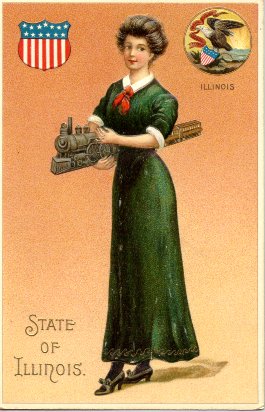
Illinois State Girl
|
|
|
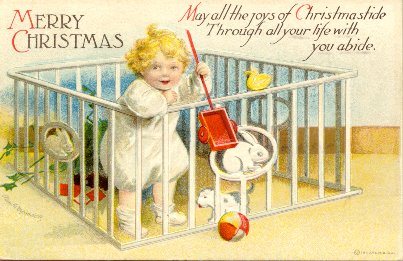 Christmas
Christmas
|
|
|
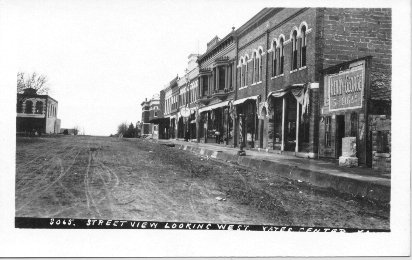 Real Photo
Real Photo
|
|
Printed cards have been used for advertising since the early 19th
century. With the evolution of stone lithography to a practical
commercial art in the 1870's, colorful trade cards became commonplace.
Children would beg their mother to take them to the store to buy a book
or toy with a view to acquiring the latest card for their scrapbook.
Although most trade cards approximate a post card in size, they can be
found in shapes from circles to the highly prized pickle-shaped Heinz
cards. The image is usually related to the product but printers offered
inexpensive stock cards with only the message pertaining to the
product. Advertising trade cards comprise an extremely diverse and
interesting collecting area.
|
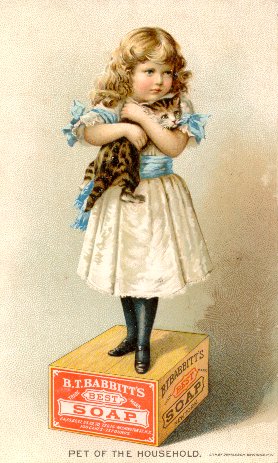 Girl with Cat
Girl with Cat
|
|
|
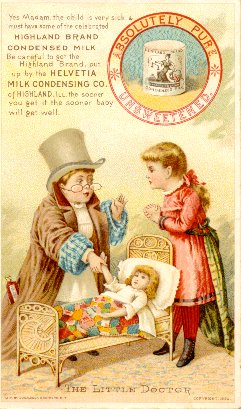 Little Doctor
Little Doctor
|
|
|
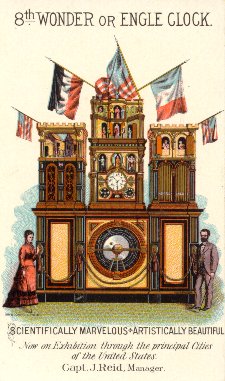 Engle Clock
Engle Clock
|
|
Die cuts comprise another example of the art of lithographic
printing of the late 1800's. They were printed solely to be collected.
After printing most were embossed and then cut to shape with a steel
press.
Die cuts come in all sizes. The smaller ones are commonly referred to
as scrap. Thus the term scrapbook. Typical Victorian era scrap books
consist of trade cards with die cuts used as decoration.
|
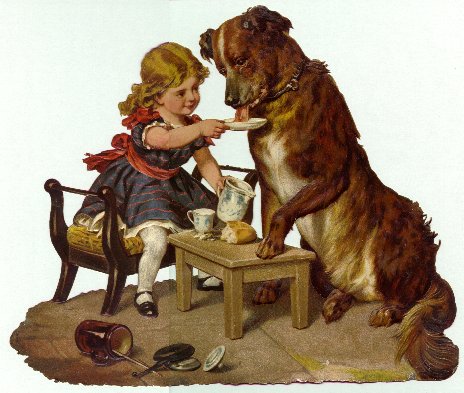 Girl with Dog
Girl with Dog
|
|
|
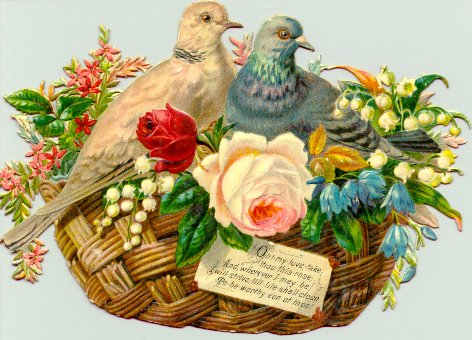 Birds in a Basket
Birds in a Basket
|
|
Cigar labels represent the finest examples of stone lithography.
They were used to help sell cigars by attracting the customer with a
colorful, interesting design. Small labels were used on the outside of
the cigar box and a larger label of the same motif was used for the
inside. The tobacconist displayed his wares in glass cabinets with the
boxes open to entice the smokers. The designs were so appealing and
desirable that printers eventually produced labels solely for
collectors.
|
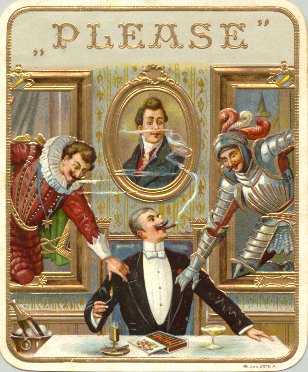 Outer Label
Outer Label
|
|
|
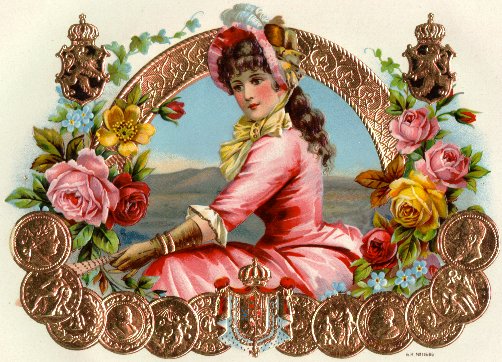 Inner Label
Inner Label
|
|
The function of a cigar band is to help prevent the tobacco leaf
from unraveling. Originally the center oval contained only the cigar
brand name. Later they became as decorative as the labels which adorned
the boxes, with a miniature of the box theme. Eventually bands were
specially printed just for collecting, many in sets such as presidents
of the United States. The world's greatest collection has over 165,000
different cigar bands!
Valentine's Day is celebrated in many countries and various ways. It
dates back to the 3rd century, named for the Roman priest Valentinus
renown for good deeds. Handmade Valentine cards began to appear in the
early 1600's. By 1840 multi-layered cards with paper lace were being
produced commercially. Original cards sold for as much as $50!
Valentine cards from all eras are collectible, from the classics of the
1800's to Disney cards of our time. The desirability and therefore
price depends upon condition, topic, artist, size, and an intangible
beauty and cuteness.
|
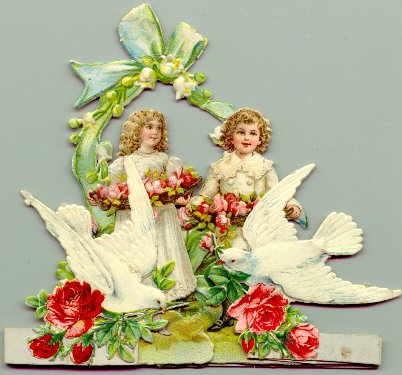 Foldout
Foldout
|
|
|
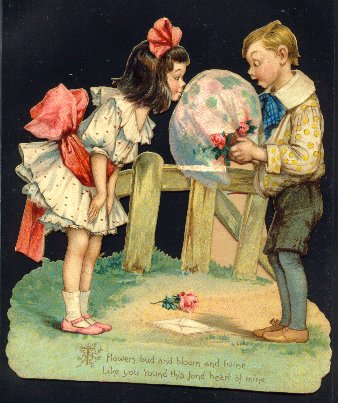 Kids and Flowers
Kids and Flowers
|
|
|
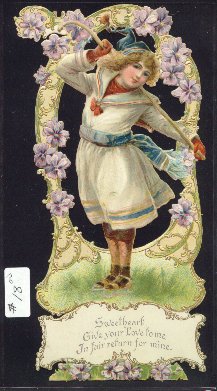 Cutout
Cutout
|
|
The elegant, relatively inexpensive printing of the late 1800's and
early part of this century found its way onto letterheads and invoices.
The more interesting ones are collectible and are referred to by the
term billheads. Some intricate designs might use as much as a quarter
or more of the page. Frequently the merchant would also use pictorial
envelopes which served as an advertisement for his wares.
Back to Main Page
|
